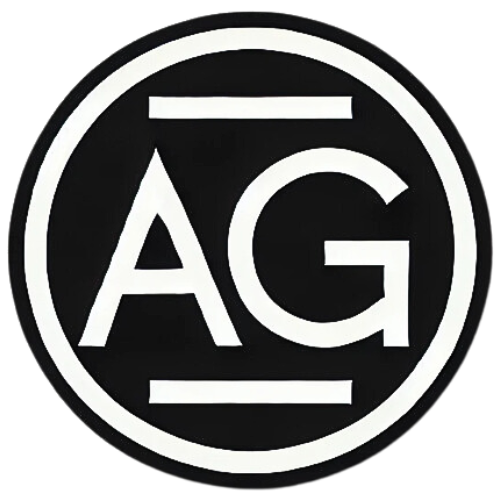The Building Block of Every Website
In the world of web development, we often hear a lot about “HTML.” But what exactly is it, and why does it matter? If you’re considering a new website, upgrading your existing one, or are simply curious about how the internet is built, understanding HTML is a great place to start. Here, we’ll break down HTML in a way that’s easy to digest and explain why it’s so important for any web project.
What is HTML?
HTML stands for HyperText Markup Language, but don’t let the technical name intimidate you. In simple terms, HTML is the language used to create and structure the content on a web page. Think of HTML as the skeleton or blueprint of a website—it lays down the foundation and tells the browser (like Chrome, Safari, or Firefox) what to display and where to display it.
At its core, HTML is made up of elements or tags. Each tag has a specific purpose, such as defining headings, paragraphs, images, links, and other building blocks of a webpage. By combining these elements, web developers like myself create the structure of a website, which can then be enhanced with CSS for styling and JavaScript for functionality.
Why HTML Matters for Your Website
Every website starts with HTML. Without it, there’s simply no structure for a webpage, no framework on which to build design or interactive features. But HTML is more than just “a necessary part”—well-crafted HTML can make your website faster, more accessible, and easier for search engines to understand.
Here’s why that’s a big deal for you and your business:
- Improved SEO (Search Engine Optimization): When HTML is structured correctly, it helps search engines, like Google, better understand what your website is about. This means your site is more likely to appear in search results for relevant queries, driving more potential customers to your site.
- Accessibility: A well-written HTML layout ensures your website can be accessed by everyone, including people who use screen readers or other assistive technologies. This expands your audience reach and shows that your brand is inclusive.
- Faster Load Times: Optimized HTML helps your website load more quickly. No one likes a slow website, and page speed can directly impact user satisfaction, conversions, and even your rankings on search engines.
- Foundation for a Better User Experience: Since HTML is the core structure, a clean, organized setup lays the groundwork for a better user experience. From navigation links to heading structures, every HTML element contributes to making your website intuitive and enjoyable to explore.
HTML in Action: A Simple Example
Let’s look at an example of basic HTML to see what it looks like in action. Below is a sample of HTML code that might be used to structure a simple web page:
<!DOCTYPE html>
<html>
<head>
<title>My Business Website</title>
</head>
<body>
<h1>Welcome to My Business</h1>
<p>We offer a range of web development services to help your business grow online.</p>
<a href="contact.html">Contact Us</a>
</body>
</html>
In this example:
- The "h1" tag creates a large, bold heading that welcomes visitors.
- The "p" tag is for a paragraph of text
- The "a" tag creates a clickable link to a contact page.
These basic elements allow us to structure text, headings, and links, making the content easy to navigate and read.
What Makes Great HTML?
Not all HTML is created equal. Well-structured HTML is both organized and efficient. Here’s what sets professionally built HTML apart:
- Semantic HTML: “Semantic” tags (like "header", "article", "footer") help search engines and assistive technologies understand the content’s meaning and purpose. This contributes to both SEO and accessibility.
- Minimizing Redundant Code: Clean HTML avoids clutter, which helps with page load speed and readability. As a developer, I ensure the HTML structure is clear and free of unnecessary code.
- Responsiveness: A good HTML structure adapts well to different devices and screen sizes. Paired with CSS, HTML can flexibly reformat the layout for mobile, tablet, and desktop users, enhancing user experience across the board.
How HTML Fits into the Bigger Picture
While HTML lays the groundwork, it often works hand-in-hand with other technologies:
- CSS (Cascading Style Sheets): CSS is what makes your website look visually appealing by controlling things like colors, fonts, and layout.
- JavaScript: JavaScript enables interactivity on your site, like animations or form validation.
- Backend Languages: HTML and frontend elements work with backend code (like PHP or Python) to support data-driven sites, such as e-commerce stores or membership portals.
This trio—HTML, CSS, and JavaScript—creates a seamless blend of structure, style, and interactivity. But without HTML as a starting point, none of the visual or interactive features would have a foundation to build on.
Why You Need a Web Developer for HTML
While learning the basics of HTML is simple, creating a fully optimized website requires knowledge and experience. Here’s why hiring a web developer, like myself, is beneficial:
- Custom Solutions: Each business is unique, and so are its needs. I work to create a site structure that aligns with your goals, making sure it’s user-friendly, SEO-ready, and well-organized.
- Time and Efficiency: As a developer, I streamline the process and save you time. Instead of spending hours trying to learn and troubleshoot HTML, you can focus on what you do best—running your business.
- Professional Quality: A well-developed HTML structure is the backbone of a successful website, and I bring experience and attention to detail to ensure your site performs at its best.
Final Thoughts: HTML as the Foundation of Your Online Presence
HTML may seem like just a bunch of code, but it’s the crucial foundation of every website. With well-structured HTML, your site can offer faster loading times, improved SEO, and a seamless experience for all users.
As your web developer, I’ll ensure your website is built on a solid HTML foundation, giving you the best chance to attract, engage, and convert visitors into loyal customers. Whether you’re looking to build from scratch or enhance an existing site, HTML is the starting line—and I’m here to guide you through it.

